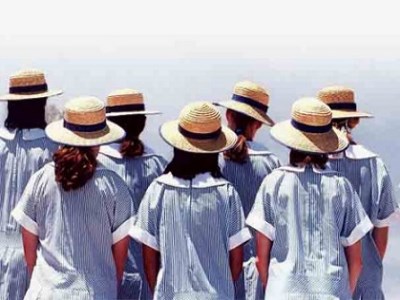
Last week in NSW, thousands of Year 6 students sat the selective schools test, hoping to gain entry to one of these top performing high schools.
In 2016, selective schools made up eight of the top ten schools in the Higher School Certificate (HSC) leaderboard.
This is not surprising, as selective schools are government schools designed to cater for gifted and talented students with superior academic ability and high classroom performance.
Unlike other government schools, they are unzoned, so students can apply regardless of where they live.
But these public schools are increasingly bastions of inequality, rather than simply havens for the gifted and talented.
Figures from the government’s MySchool website show that in NSW, selective high schools are among the most socio-educationally advantaged in the state, surpassing even prestigious private schools.
MySchool compiles an Index of Community Socio-Educational Advantage (ICSEA) for each school, taking into account parents’ education and occupation, the school’s geographic location and proportion of Indigenous students.
Recruitment breakdown
Among Sydney’s 16 fully selective schools in 2015, 50% scored 1200 or more in the ICSEA (the national average is 1000).
James Ruse Agricultural High School, NSW’s top school for the last 21 years, came in at 1262.
By comparison, among the 20 top performing private schools in Sydney (as measured by 2016 HSC results), only 30% had an ICSEA of 1200 or more.
Only one private school, Sydney Grammar, outstripped James Ruse, with an ICSEA of 1303.
The levels of advantage within selective schools are perhaps even more stark when we compare the students falling within the top quarter of socio-educational advantage (Q1) with those in the bottom quarter (Q4).
As the chart below shows, in 2015, an average of 74% of students in Sydney’s selective schools were drawn from the most advantaged quarter, compared to only 2% from the bottom quarter.
More than half (56%) of Sydney’s selective schools had no students at all from the lowest quarter in 2015.
What’s more, this inequality has grown noticeably in just five years, with 2010 figures showing a (slightly) more balanced distribution.
On average 60% of selective school students came from the highest quarter, while 9% were from the lowest.
There is no stipulation in NSW around the proportion of students selective schools can accept from a single postcode. There are also no diversity benchmarks that these schools must meet.
Is this happening in other states too?
There are signs that other states are moving towards the NSW model.
Victoria now has four selective schools, whose enrolments are similarly polarised, though not to the same extent as in NSW.
As the chart below shows, in 2015, an average of 62% of students were drawn from the most advantaged quarter, up from 51% in 2010. Only 5% were drawn from the lowest quarter in 2015, down from 12% five years earlier.
Schools should select regardless of background
As public schools designed to cater for gifted and talented students, selective schools should be accessible to high achievers regardless of family background.
The MySchool figures raise serious questions about how accessible or meritocratic selective schools really are.
They have become more inaccessible in recent years, almost completely so to the most disadvantaged groups.
Ultimately, most students who sat the selective schools test last week will be unsuccessful in securing a place.
And based on current trends, we can confidently predict who will be successful: the majority will come from the most advantaged groups in our society, often from Asian migrant families. Virtually none will be from the most disadvantaged groups.
Selective schools were set up to provide opportunities to the gifted and talented, not just the wealthy, gifted and talented.
Christina Ho, Senior Lecturer & Discipline Coordinator, Social & Political Sciences, University of Technology Sydney
This article was originally published on The Conversation. Read the original article.


